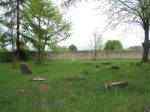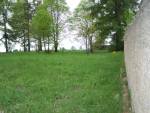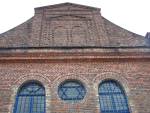| strona główna | cmentarze | warto wiedzieć | księga gości | napisz do nas |
| CZARNY DUNAJEC | |||
The first mention of Jews living in the village of Czarny Dunajec come from the end of the eighteenth century; however, a significant development of Jewish settlements in this region started in the sixties of the next century. In 1880, there were 221 Jews who fell under the kehilla in Nowy Targ. A synagogue was built in the second half of the nineteenth century. During the census of 1921, 341 residents of Czarny Dunajec declared Jewish descent. After the Germans occupied Czarny Dunajec, local Jews were subject to rising repression. A forced work camp was started in the village, where many people were murdered. On August 30, 1942, most of the Jewish residents were deported to Nowy Targ, where they subsequently were transferred to the Belzec death camp. The Jewish cemetery was founded in Czarny Dunajec presumably in the second half of the nineteenth century. It is located in the north end of the village on the road to the village of Rabka. The location of the cemetery can be found on a military map of 1934. During the Shoah, the Nazis carried out numerous executions on the site of the cemetery. Today's conservation status of the necropolis reflects the contents of a letter received by the Jewish Historical Institute by a resident of Kościeliska: "With great regret, I looked upon this deliberately ruined cemetery, where cows graze and piles of trash lie. After the war, the cemetery was devastated severely; the headstones had been uprooted and only one remains with a Hebrew inscription. There are, however, many graves with only small slabs of cement and no inscriptions." text: K. Bielawski |
|||
 |
 |
 |
 |
General view of the cemetery |
Part of the cemetery wall |
Last matzevah |
Synagogue in Czarny Dunajec |
| We look forward to receiving any information about Jews from Czarny Dunajec and their cemetery. We are also awaiting more information from people who remember the cemetery from before World War II. |
|||
 |
|||
| Teksty i zdjęcia opublikowane w serwisie www.kirkuty.xip.pl są chronione prawem autorskim. Wykorzystanie materiałów możliwe wyłącznie po uzyskaniu pisemnej zgody Redakcji. |
|||
| strona główna | cmentarze | warto wiedzieć | księga gości | napisz do nas |
